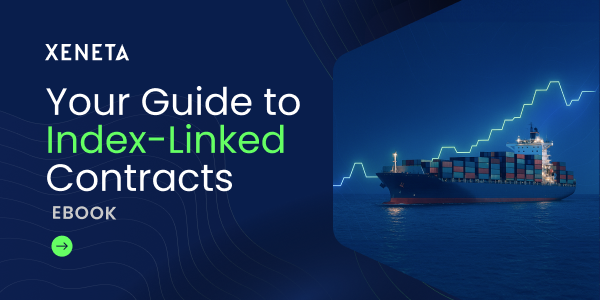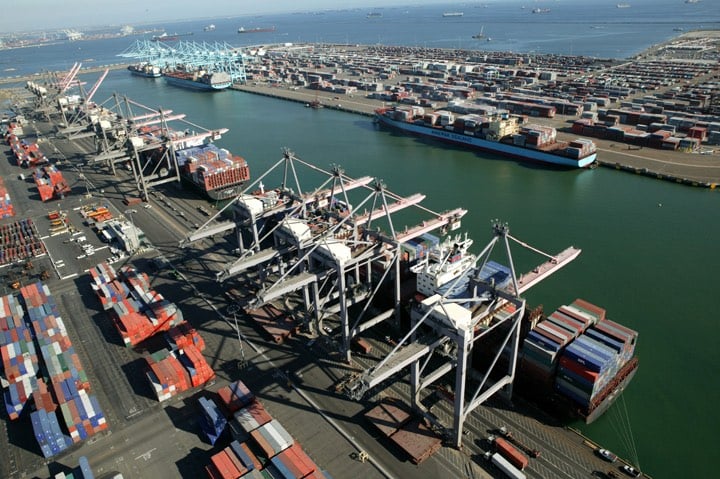The re-introduction of the SHIPS for America Act last week is yet another example of the complexity and uncertainty facing ocean container shippers in 2025.
With yet more fees to consider when importing goods into the US, taking decisive action on supply chain cost and resilience becomes increasingly difficult.
If the rules of the game are changing so dramatically from one week to the next, procuring and operating freight requires an understanding of the dynamics and nuances at play across service providers.
Setting the scene
In February, the Office of the United States Trade Representative (USTR) announced proposals for fees on Chinese carriers and ships entering US ports. This included a fee based on the percentage of a carrier’s orderbook being built in Chinese yards.
However, when revised proposals were announced on 18 April, this element was not included – to much relief across the industry.
That relief may be short-lived however, because the SHIPS for America Act - a completely separate scheme to the USTR port fees – was reintroduced last week and now includes a fee to be levied against carriers (of any nationality) based on the percentage of orderbook being built in certain Chinese yards.
This fee was not included when the Act was first tabled in December last year.
The fees
The part of the SHIPS for America Act relevant to this issue is summarised below.
A USD 5 per ton fee for ships owned or operated by Chinese carriers, as well as ships registered in China.
There will also be a USD 5 per ton fee for ships operated by non-Chinese carriers if more than 50% of new vessels on order are being built at a designated ‘foreign shipyard of concern’.
In the first instance this includes all yards owned by China State Shipbuilding Corporation. More yards could be added to this list in the future.
Non-Chinese operators with between 25% and 49% of ships on order in affected yards would face USD 3.5 per ton.
Furthermore, there is a USD 1.25 per ton penalty tax for any owner/operator with an existing fleet of ships with 50% or more constructed or undergoing repairs at a shipyard of concern.
These fees would not be cumulative - highest category would apply - but they would be on top of USTR fees.
A complicated situation just got even more complex – an example
The COSCO Shipping Denali is a 14 500 TEU ship, with a net tonnage of 84 300. It is owned and operated by COSCO and was built in China.
Firstly, looking at the USTR fees, this ship would face USD 4.2m every time it calls a string of US ports in a service rotation. It will now also be hit by an additional USD 0.4m under the SHIPS for America Act.
The situation becomes far more complex when you consider COSCO is part of the Ocean Alliance with CMA CGM (France), Evergreen (Taiwan) and OOCL (Hong Kong).
The USTR port fees will not come into effect until mid-October, giving carriers and alliances time to re-align their fleets to lessen the impact.
In the case of the Ocean Alliance, this would presumably mean sending vessels owned and operated by CMA CGM and Evergreen into the US and use vessels owned by COSCO and OOCL on other global trades.
The SHIPS for America Act makes this approach more problematic because CMA CGM has more than 35% of its orderbook at China State Shipbuilding Corporation yards, meaning its ships would be hit by the USD 3.5 per ton tax.
For example, this means the CMA CGM Bali – a 15 294 TEU vessel – would incur fees of USD 0.2m under the SHIPS for America Act, despite it no longer facing fees under the USTR proposal.
If the Ocean Alliance is to begin working together re-aligning its fleet, it may be a case of choosing the least worst option. Avoiding fees completely may be an impossible task.
What does this mean for shippers?
There are huge questions over how carriers will pass on the cost of the USTR fees, so shippers should be ready to push back against these surcharges. The fact they must now also factor in surcharges relating to the SHIPS for America Act means the potential additional costs are even higher.
While the financial implication of the SHIPS for America Act is lower than the USTR fees, it is yet another cost to be absorbed.
The complexities in the way different carriers and alliances will be exposed to the fees should be factored by shippers when procuring their next freight contract. Striking a low rate may not look quite so appealing if your chosen carrier is heavily exposed to these additional fees/surcharges.
More bad news for shippers
Section 415 of the SHIPS for America Act states 1% of goods from China (measured by tonnage) must be transported on US-built ships, starting five years after the data of enactment. This requirement increases 1% each year to 10%.
Any shipper failing to comply would be fined an amount that is greater than the difference of the cost for shipping on a US-built ship versus cost for shipping on a flag of convenience ship.
It is unclear how this would work in practice, but, if it does come to pass, it would be a financial as well as administrative headache for the shipper.
How do shippers approach this situation?
The frequency with which the obstacles facing shippers are emerging and evolving presents major challenges when it comes to procuring freight.
It is now more important than ever to benchmark carriers against each other in terms of both cost and service delivery - whether that is capacity, transit times, schedule reliability or detention and demurrage. Simply aiming to strike the lowest price would fail to account for the many other risks at play.
It also means having a clear understanding of the T&Cs in your freight contract is crucial. If carriers are being hit by additional fees, they are sure to pass this on to shippers – and it could be wrapped up in surcharges of different labels and definitions.
Of course, all the above is in addition to the wider tariff regime being rolled out by the US Government, meaning the life of a freight procurement professional in 2025 is not getting any easier.
Index-linked contracts could be one way for shippers to relieve some of the pressure on procurement teams by allowing them to focus on operational delivery rather than constantly renegotiating rates in the wake of market disruptions.
There is no sugar-coating how difficult the landscape is, but there are actions shippers can take to allow them to make informed decisions at the appropriate time.
%201.png)



.png?width=860&height=258&name=Newsletter_BlogCTA%20(1).png)
.png?width=387&name=image%20(45).png)

